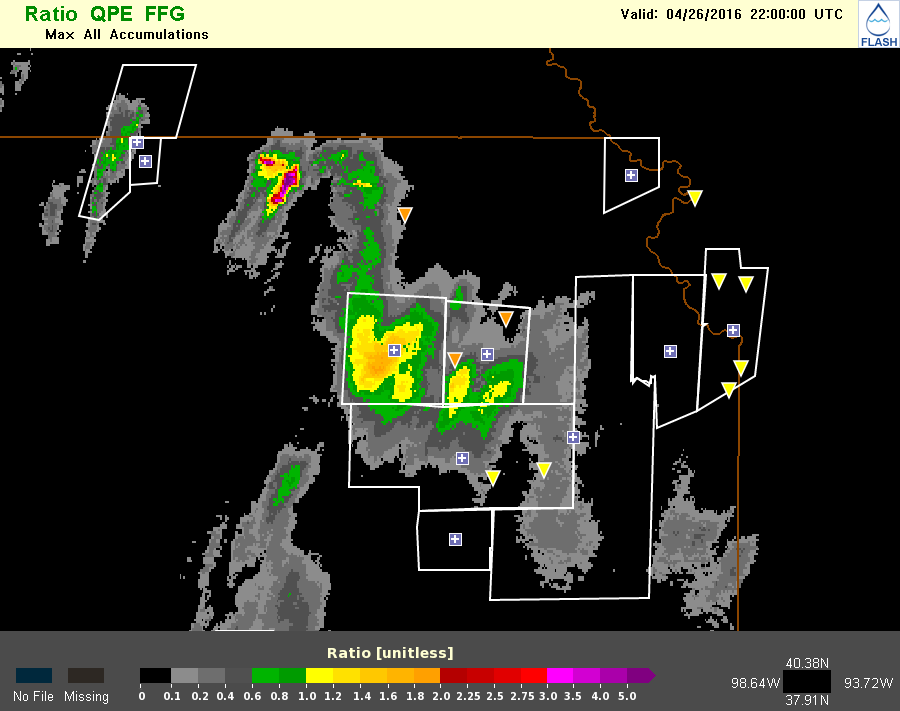QPE-to-FFG Ratio - Warning Decision Training Division (WDTD)
Navigation Links
Products Guide
QPE-to-FFG Ratio
Short Description
Analogous to the ratio provided in FFMP, this is the ratio of the current MRMS Radar-Only QPE value at each grid point to the current nationally-mosaicked FFG value for the same grid point.
Subproducts
Available for rainfall durations of 1-, 3-, and 6-hours. A maximum product exists which finds the maximum ratio across all accumulation durations.
Primary Users
NWS: WFO, RFC
Input Sources
MRMS Radar-Only QPE, and Nationally-Mosaicked FFG
Resolution
Spatial: ~1 km x 1 km
Temporal: 2 minutes (Keep in mind FFG only updated every 6 hours)
Product Creation
The FLASH system takes the MRMS Radar-Only QPE value for the defined accumulation periods (1-, 3-, and 6-hours) and compares those gridded values to the corresponding nationally-mosaicked FFG gridded values.
Technical Details
Latest Update: MRMS Version 12
NOTE: In version 12, all FLASH products now use the instantaneous rainfall rates from the Dual-pol radar synthetic QPE product.
Accessible on:
- Operational AWIPS
- V11.5 -- MRMS menu
- V12 -- via LDM, if set-up
- MRMS Development site
References
Gourley, J., Z. Flamig, H. Vergara, P. Kirstetter, R. Clark III, E. Argyle, A. Arthur, S. Martinaitis, G. Terti, J. Erlingis, Y. Hong, and K. Howard, 2016: The Flooded Locations And Simulated Hydrographs (FLASH) project: improving the tools for flash flood monitoring and prediction across the United States. Bull. Amer. Meteor. Soc. doi:10.1175/BAMS-D-15-00247.1, in press.




